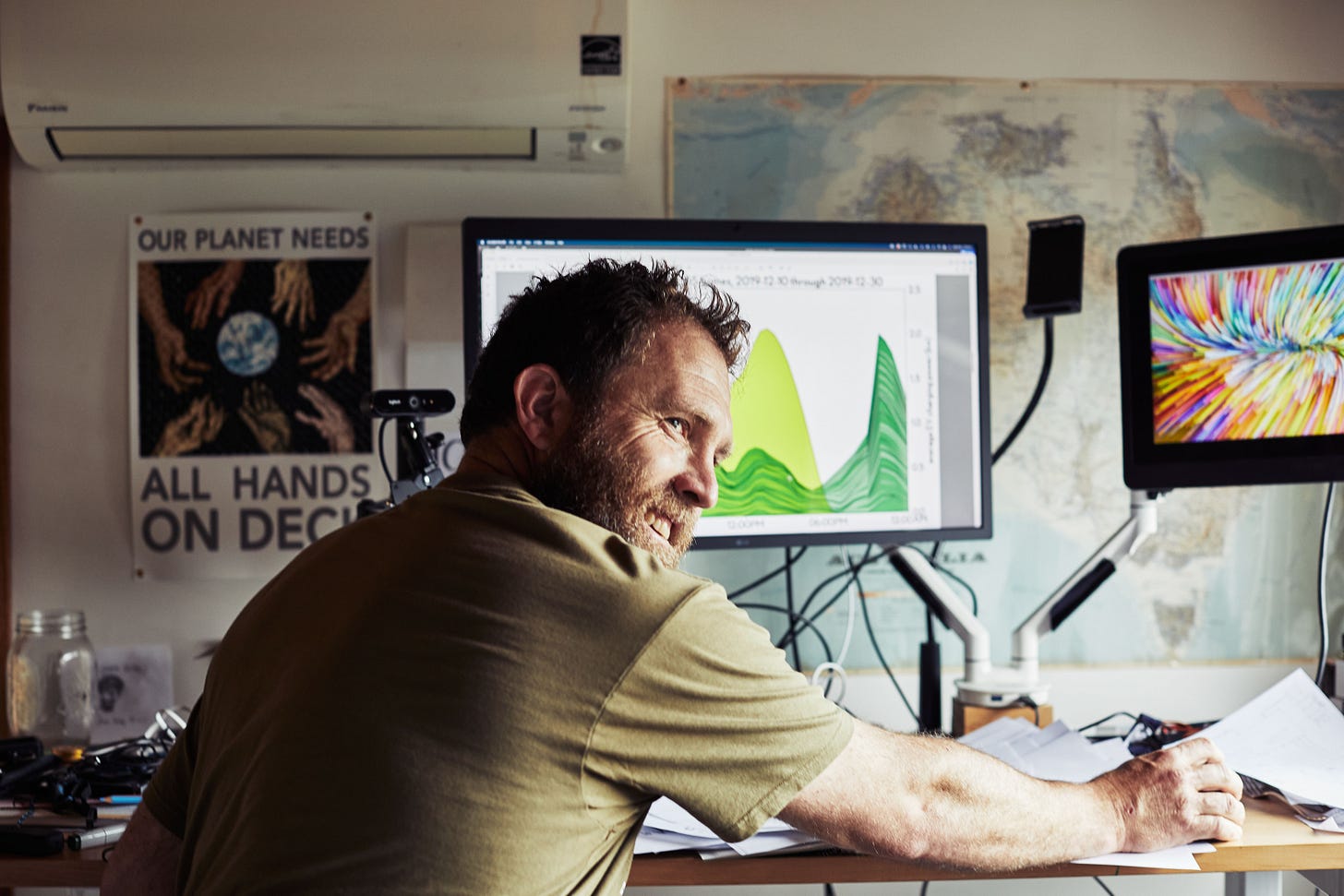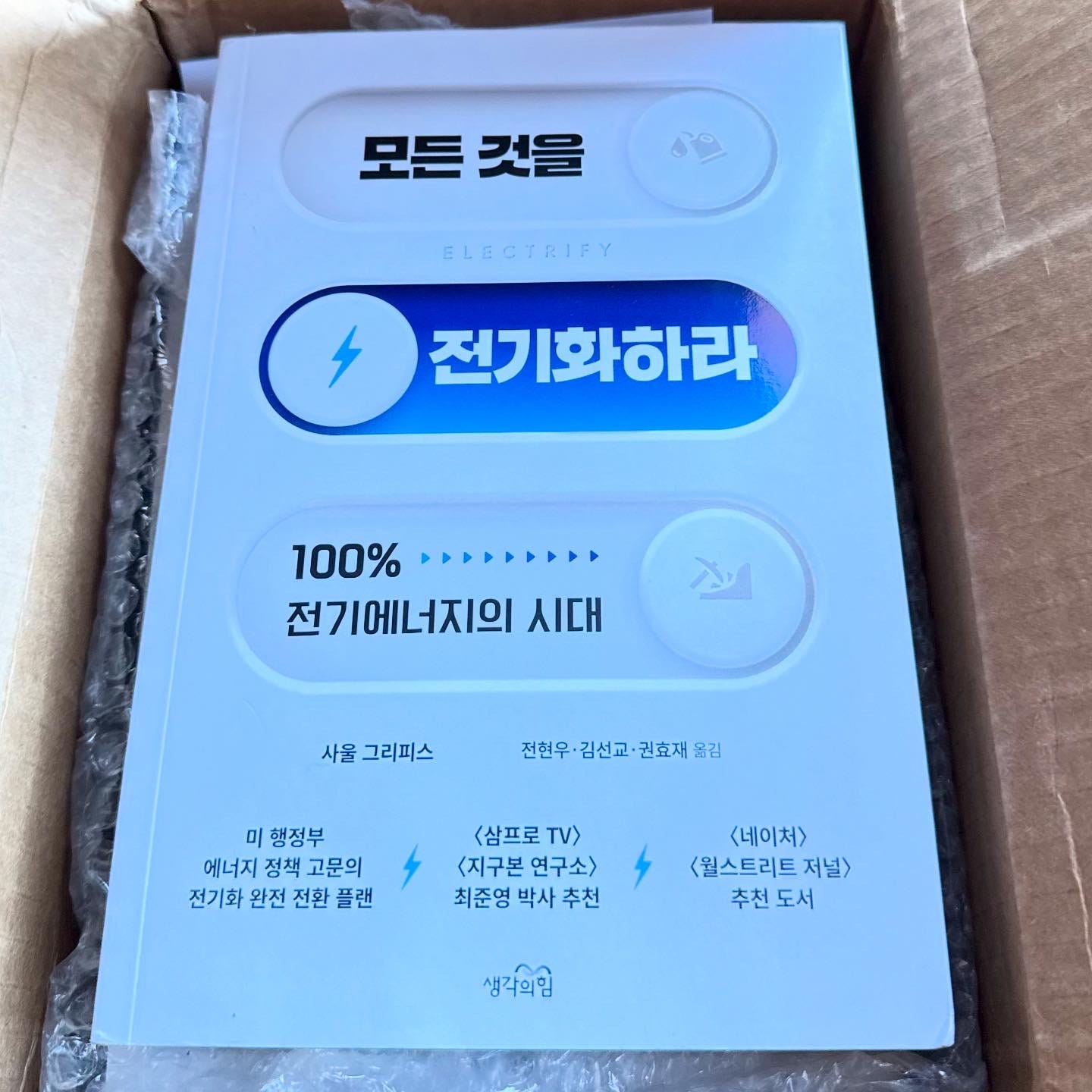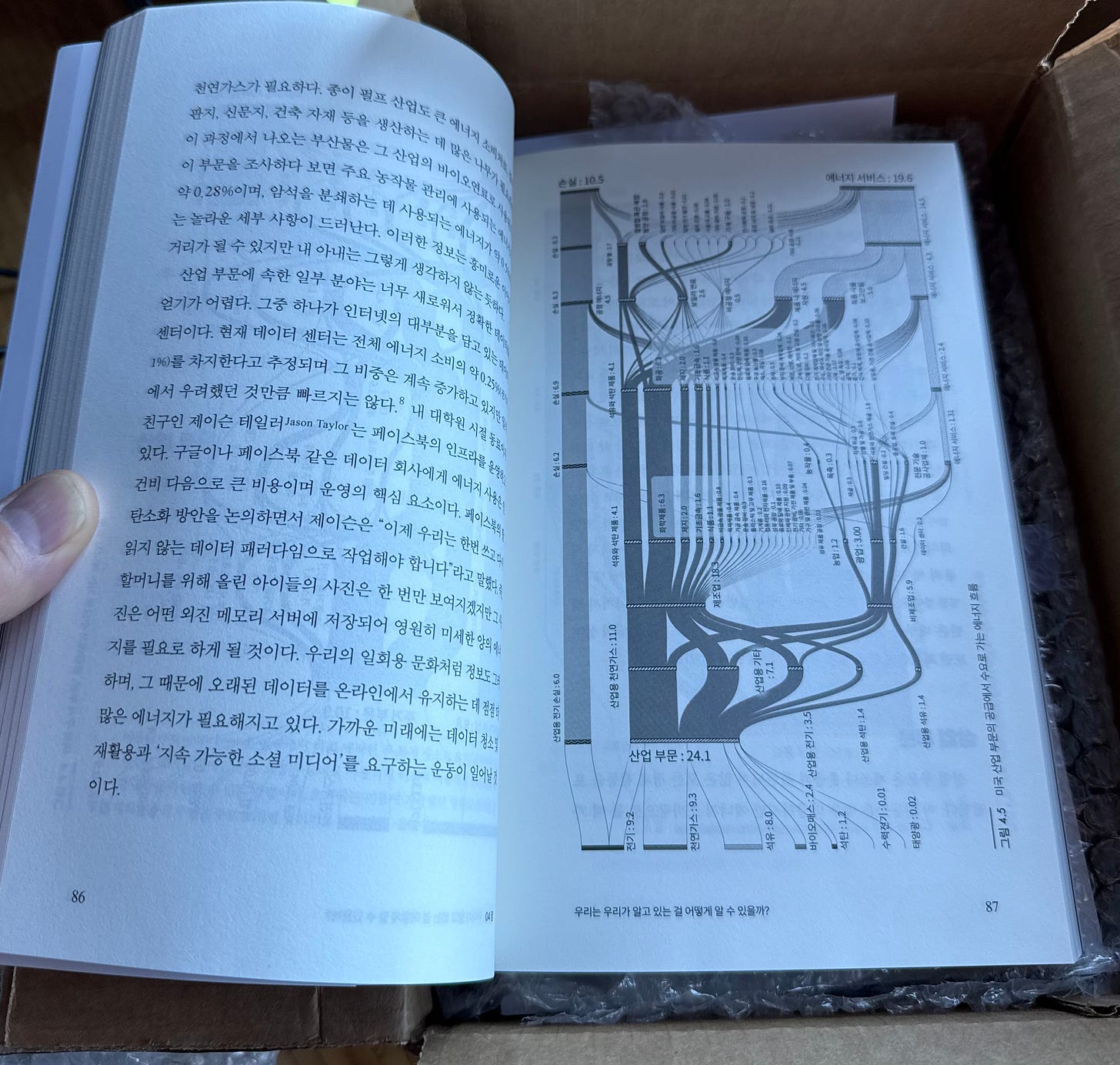Why a substack on energy, electrification and the material economy?
The flow of energy, materials, and money, with a strong theme of electrification, and asking the question of what is the better story — for a better politics — to get faster climate action.
This is my first post for my substack (do I call it a newsletter?) where I wish to explore the issues of the flow of energy, the flow of materials, and even the flow of money. I’m interested because these are the fundamental flows that determine how society works. You might also consider labor, or even land-use, a fundamental flow, but I had to draw a line somewhere — or perhaps I will get to that too. For me personally this is my own effort to understand how we might cope with what I see as the biggest existential challenge for humans — climate change — and the intertwined issues of biodiversity and an ecology capable of supporting not only us, but an abundant and vibrant world of critters and creatures and flora and fauna.
I consider myself somewhat of a global expert in energy flows, and can even point out the mistakes in the methodologies by which we tell ourselves stories about what we think we know about energy production and use — a topic for another future post. Professionally I have been building climate oriented tech-companies since I left MIT with a PhD in 2004. Through that I developed a fascination with energy flows that eventually led to doing a study of such for the DOE through ARPA-e. The web-page looks a bit tired now, but you can see www.departmentof.energy for an in-depth exploration of energy flows in the US economy. From this work I’m comfortable supporting the position that our pathway to an abundant, efficient zero emission economy is through electrification. I wrote a book on this with MIT Press “Electrify” (2020) that was at least a little influential in the formulation of the Biden Administration’s Inflation Reduction Act (IRA). I also founded the organization “Rewiring America” in 2019 to advocate for electrification and rapid and appropriate climate action for a global climate target of 1.5 degrees C. Sadly that target is long gone with a second Trump administration, though he alone cannot be blamed… even the IRA was insufficiently ambitious to hit that target, and implemented too slowly.
In short summary, we could electrify our economies globally, save more than half of the energy we use – which is wasted because of the properties of fossil fuels – and save money for households, communities, and entire nations. I’ve written 3 more books and one long essay on the underlying science, engineering, economics, and even community and household level technical details of this as “The Big Switch” (2022), “The Wires that Bind” (2023) and the just released “Plug In” (2025).
We could electrify our economies globally, save more than half of the energy we use – which is wasted because of the properties of fossil fuels – and save money for households, communities, and entire nations.
My original technical background is in Metallurgical engineering — I know my way around a blast furnace and a rolling mill — and my first few jobs were on a steel rolling mill and then in an aluminium recycling smelter. I have been fascinated with materials and manufacturing since I was a teenager, and I’m very interested in how materials flow through the economy, particularly as that relates, again, to putting some intellectual teeth behind the rather vague notions of “circularity” and “sustainability”. I’m working on a new book — working title “Stuff” with MIT press. This is my follow up to “Electrify” and if all goes well this substack is a place where I will explore these ideas and explore the data in anticipation of a 2026 release of that book. This book will once again lean on my love of Sankey diagrams as a way of understanding flows which applies just as well to materials as to energy. I’m getting excited about creating some new classes of Sankey that capture both the interactions of two different types of flows; energy and stuff, but also capture the feedbacks. In a world where we achieve some version of sustainability or circularity most of the flows of materials must come back around and be inputs to the material economy via some kind of recycling — not only do we not yet know how to do that, we don’t even know how to visualize it well!
Thinking both about energy, but also about materials, has further led me to have more than a passing interest in economics, or more specifically the flow of money, and the question of who we give credit to and why. In brief, you can buy a more expensive electric car, but save lots of money in its lifetime compared to a gasoline or petroleum car, because electricity can be far cheaper in the running of the car. Much of this benefit is because of the efficiency of electric things versus the inefficiency of burning things, but it is especially true when you make electricity cheap, such as rooftop solar has done in Australia. This means solving climate change means we need to help more people afford the more expensive things, probably via some version of credit, so they can save money in the long run. It might be unglamorous, but I have come to see “climate justice” and “equitable transition” as largely a problem of banking and credit. Whether it needs large scale changes to economics is an unresolved question (for me).
This means solving climate change means we need to help more people afford the more expensive things, probably via some version of credit, so they can save money in the long run.
Solving climate change for everyone as a result is a question of who has access to credit. The same applies to materials. Building codes pretty much dictate a modern western home weighs 200-300 tons. You can build it cheaply and it will only last 50 years, or you can build it well and it will last 200 years or more. As they say “rich people can’t afford to buy cheap things”. The easiest strategy to making something more sustainable is making it last twice as long. This is obvious yet we restrict who has access to the credit to build or buy better things in the first place. We can’t afford to build any more inefficient homes running off natural gas.
My long run plan is to also write a book on the flow of money - how it moves through the economy, and how value is created and destroyed. In the interim you will see me work through ideas about how stuff flows and show you the implications of my work in energy flows.
So this substack is basically my working notebook for the things I’m writing and thinking about writing, and for the policies and regulatory changes and technologies that I am advocating for as solutions to our planetary predicament. More importantly in this historical moment it is my personal effort to tell a better story.
I’m pretty much a single issue voter - climate action! I would consider myself a progressive in the grand scheme of human beings progressively getting better at living well together. This might be in the sense that Keynes believed we could and should all live “the good life”. So I’m looking here to explore what the good (electric) life is. I think parties left and right forgot to push for the good life. Left parties appear to still defend unions as the path to a good life despite decades of declining union membership. It is obvious now that parties to the right have accepted that neoliberalism was a disaster as globalisation immiserated people in their local communities as jobs moved to the places with lowest wages. The left appears to be retreating to old ideas of labor vs capital and the right seems to have moved from neoliberalism to techno-feudalism and oligarchy. I want to participate with the people trying to have a new idea that is none of these and moves us forward, particularly around energy and climate.
Parts of the right now seem to believe the good life (for some) lies in AI, automation, and moving to mars to keep endless growth going with extra-terrestrial resources and an American flag planted on Mars. John Locke would be proud of that move. I don’t entirely buy that story, partly because it is going to take so many generations for that to even make a dent in the human condition. It might be part of the end result, but someone has to fill in the details of getting to there from here. This includes the all important question of what kind of world we leave behind… an empty husk of much diminished life? or hopefully a regenerating and abundant and beautiful oasis in a cold dark universe. If we have to travel for years at a time on space ships, and live for years at a time on distant rocks, we certainly need to know how to operate those small finite satellites sustainably, so we may as well figure it out on this one.
To design a way of living within the limits of a finite planet, we need to think seriously about not just our stocks of things, but the flows — of water, energy, ores, minerals, metals, plastics, soils, gases and more — and how we make this miraculous and precious rock full of monkeys fly through cold dark and lonely space in a way that keeps us exploring just what humans can think of and achieve. Welcome to Energy & Stuff.
I’ve written books for academic audiences as well as the general public. Expect this substack to bounce between the two, occasionally data and wonk heavy, but in general trying to bring electrifying climate action to the masses.
Saul.
p.s. This month my new book “Plug In” was released and I’m doing book tour events between now and October.
p.s.p.s. I just received copies of the Korean translation of “Electrify”.
p.s.p.s.p.s. I always loved the Thoreau quote “All news is gossip”, so I’ll try to stay away from daily headlines and stick to big themes, books, and other good writing and content that is shaping what I’m thinking about.
Here are the books I’m reading and processing this week, perhaps I’ll do book reviews if the people want it, but in the interim here are the links:
“Capitalism and It’s Critics” — A Battle of Ideas in the Modern World
Half way through this and loving it. I never took economics and am enjoying this in my self-guided tour of the dismal science. Like anything as you peel the onion skin it becomes more interesting and Adam Smith is misunderstood more than I thought and was himself a critic of capitalism, and the Luddites were much more nuanced than I thought and some of the history of it gave me real MAGA vibes. More to come on this book I’m sure.
“Land Power” — Who Has It, Who Doesn’t, and How That Determines the Fate of Societies
I’m fascinated as to how people and corporations come to own the large tracts of land that we extract fossil fuels and minerals from. This includes the history of how that land has changed hands. Ultimately I’m interested in the property law that has been used to defend giving more or less of the proceeds of this land back to the population. An incredible and pertinent example is the gas projects just approved on the North West Shelf of Australia. Australian politicians let themselves be convinced this energy is necessary for the energy “transition” (see below). The government never showed convincing modelling that it is in fact necessary, and obviously the gas companies benefit from threatening “energy insecurity” and other nonsense. (I have done modelling that shows we don’t need this gas — why didn’t we use that?).
250 years ago this was Indigenous Australian’s land. British property law dubiously claimed it for the crown. Is it possible that King Charles could over-rule the project given his climate concerns ? What is the detailed transfer of title and property rights that allows this stupidity to go on (Australians will barely benefit from any royalties on this gas as is well explained at Punter’s Politics).
Land Power was good, and describes civilization scale trends in land ownership, but it didn’t get me to what I want which is a stronger sense of how this ownership is conferred, especially as it relates to public land, and whether there is legal opportunity in disputing it to slow the mining of fossil fuels. If you have reading recommendations on this send them along! If you know a great introductory treatment on John Locke let me know.
“More and More and More” — An all consuming history of energy.
I started out hating this and finished loving it. It makes the important point that we aren’t really going through an energy “transition” and never have, and points to the links between our energy and material worlds. I’ll be coming back to this in a much longer post where I’ll analyse some data that I wished was in the book, but can’t blame it for not having, as in the last chapter the author teases that someone should look in more detail at the relationship between flows of energy and stuff to understand it. Anyway, we lazily use the idea of “renewable energy transition” or “clean energy transition” all the time, so I think it is important to interrogate whether it really is a “transition” or something else that we need.
(Some of) the substacks I’m reading and/or listening to (when I can).
The Crucial Years — Bill McKibben
Dr Volts — David Roberts
Heated.world — Emily Atkin
Noahpinion — Noah Smith
Sustainability By Numbers — Heather Ritchie
Chartbook — Adam Tooze










Welcome to Substack, Saul. I'll work hard to spread your insights and hope you can join me in a Sustain What conversation soon to explore next steps electrifying most things.
Here for all of it, as ever. Let's go.